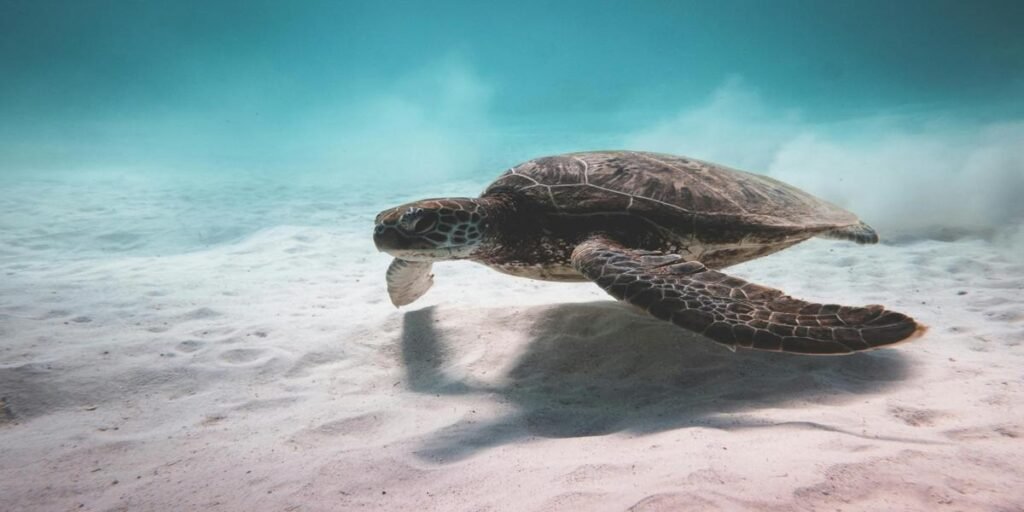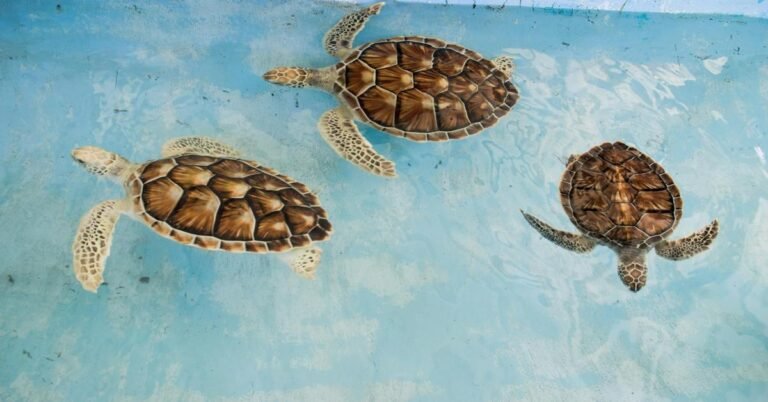The Taimai turtle, a lesser-known yet captivating marine species, has long piqued the interest of ocean explorers and researchers. With its striking appearance and elusive nature, the Taimai stands out as a remarkable creature in the underwater world. In this article, journey through the life of the Taimai turtle, exploring its habitat, diet, ecological significance, and the ongoing efforts to ensure its survival.
Understanding the Taimai Turtle

Often overshadowed by relatives like the green sea turtle and loggerhead, the Taimai turtle has its own unique appeal. Its distinguishing shell patterns and vibrant colors make it a visually striking member of the marine turtle family. Typically found in coastal, coral-rich regions, the Taimai prefers environments that offer food and protection, thriving in areas where it can remain elusive.
This turtle often goes unnoticed, navigating coral reefs and rocky shores out of sight. While not as frequently spotted as other sea turtles, the Taimai’s role in marine ecosystems is equally significant.
Where Can You Find the Taimai Turtle?

The Taimai turtle thrives in warm, shallow waters abundant with marine life. Coral reefs and rocky coastlines provide the ideal habitats, as these areas offer both food sources and natural shelter from predators. This preference for coral-dense regions allows the Taimai to blend into its surroundings, contributing to its elusive reputation.
The intricate coral structures provide ample resting and foraging spaces, making these habitats essential for maintaining a balanced marine ecosystem. Healthy coral reefs are crucial to the survival of the Taimai, as they directly impact this species’ ability to thrive.
The Diet of a Taimai Turtle
Unlike some turtles with more specific diets, the Taimai turtle is highly adaptable, consuming a variety of foods found within its habitat. Its diet includes seaweed, small marine organisms, soft corals, and other reef-dwelling species. This omnivorous nature enables the Taimai to play an active role in maintaining coral ecosystems, as its feeding habits help prevent any one species from dominating and potentially harming the reefs.
The Taimai’s diet is essential to coral health, as it consumes certain sponges and marine plants that could otherwise overpopulate the reef. This balance supports a thriving underwater community, allowing various marine species to coexist.
The Role of the Taimai Turtle in Marine Ecology
Beyond its diet, the Taimai turtle contributes significantly to ocean ecosystems. Its presence promotes biodiversity, supporting coral reefs that house countless marine species. By consuming specific reef organisms, the Taimai turtle indirectly fosters a balanced environment where diverse marine life can flourish.
As a bioindicator, the Taimai turtle’s health often mirrors the condition of its environment. A thriving Taimai population usually reflects a healthy reef ecosystem, while a decline might signal environmental issues like pollution or coral degradation. This connection makes the Taimai turtle an important symbol of marine ecosystem health.
Challenges and Threats Facing the Taimai Turtle
Despite its ecological importance, the Taimai turtle faces several threats to its survival:
- Plastic Pollution: Ingesting plastic waste, mistaken for food, can lead to severe health issues for sea turtles, including the Taimai.
- Coral Reef Degradation: Climate change has accelerated coral bleaching, causing habitat loss. Rising ocean temperatures and acidification threaten coral-rich environments critical to the Taimai’s survival.
- Fishing Bycatch: Taimai turtles are often accidentally caught in fishing nets, which can result in injuries or fatalities, further endangering their fragile population.
Conservation Efforts: Saving the Taimai Turtle
Conservationists are working diligently to address threats to the Taimai turtle’s survival. The establishment of protected marine zones where human activity is restricted allows Taimai turtles to feed and breed safely, minimizing risks from fishing and habitat destruction.
Efforts to combat ocean pollution, particularly plastic waste, are also essential. Many organizations advocate for responsible waste management and conduct ocean cleanup initiatives to reduce the risks plastic poses to marine life.
Community-based conservation programs further aid these efforts by involving local populations, especially in coastal areas. These programs educate communities on sustainable practices, promoting habitat preservation and monitoring of nesting sites, which helps to support a thriving Taimai population.
How You Can Help the Taimai Turtle
Anyone, regardless of proximity to the ocean, can make a positive impact on Taimai turtle conservation. Here are a few effective ways to contribute:
- Reduce Plastic Consumption: Limit single-use plastics and support recycling initiatives to minimize oceanic waste.
- Support Conservation Groups: Contribute to marine organizations dedicated to protecting sea turtles through donations or volunteer work.
- Raise Awareness: Educate others about the Taimai turtle and the challenges it faces, amplifying conservation efforts.
- Choose Sustainable Seafood: By selecting responsibly sourced seafood, you support fishing practices that reduce harm to marine species.
Conclusion: The Taimai Turtle’s Place in the Ocean’s Future
The Taimai turtle symbolizes the beauty and complexity of marine ecosystems, playing a vital role in sustaining coral reef health. As threats to its existence grow, proactive conservation efforts are critical for ensuring this unique species continues to thrive.
By appreciating the Taimai turtle’s ecological importance and supporting conservation initiatives, we can help secure its future. Collective action, no matter how small, contributes to a world where the Taimai and other marine life flourish.
FAQs
The Taimai stands out for its distinctive shell patterns and preference for coral-rich habitats, setting it apart from other sea turtles.
The Taimai helps maintain a balanced ecosystem by controlling species that might otherwise damage the coral reefs.
Major threats include plastic pollution, coral reef destruction, and accidental bycatch in fishing activities.
Reducing plastic use, supporting marine conservation groups, and opting for sustainable seafood are effective ways to support the Taimai’s survival.
